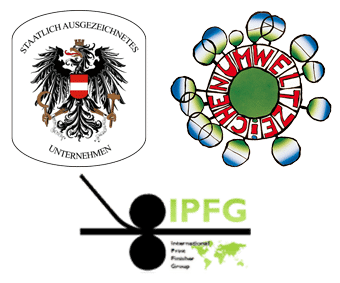Effect colors
Some colors not only reproduce a printed image, but also provide additional benefits in the form of printed functionality.
Below you will find a small list of frequently requested effect colors. Do you have a request that goes beyond the following? Just ask us!
Glitter varnish / Glitter varnish
Would you like a little glitz and glamor for your communication? We conjure up sunshine and starry sparkle for you! You can find more information here: Glitter varnish
Scratch-off inks
Our scratch-off printing awakens the play instinct in people. You can find more information here: Scratch-off printing
Fluorescent colors / Neon colors / Fluorescent colors
The pigments in fluorescent paint have a neon color due to the natural UV component in sunlight. This is also referred to as fluorescent paint. Signal colors are usually preferred as fluorescent colors, such as neon red, neon pink / neon pink, neon orange, neon yellow or neon light green. By using thick-layer screen printing, our neon colors have a particularly intense effect compared to other printing processes. We can also print them on materials up to several millimetres thick, such as cardboard.
Photoluminescent paint / phosphorescent paint
This color stores light energy and releases it again in the dark by glowing. It therefore glows (!) as soon as it gets dark. Colloquially, however, the term noctilucent, with a T for night, has also become established.
From a technical point of view, this is referred to as phosphorescent paint, internationally as a “glow in the dark” effect.
Like a rechargeable battery, the effect weakens over time and can be strengthened again by recharging under light. The brighter the background, the better and longer the lighting effect.
Afterglow paint is slightly milky-transparent in daylight and glows yellow with a slight greenish tinge in the dark. It is often used in the area of stickers and signs for marking escape routes. In the graphics sector, it is often used for mailings, book covers or Advent calendars.
Safety lacquer / black light lacquer
The almost transparent and therefore unnoticeable security varnish suddenly glows neon-colored under certain light sources. The required light wavelength can be found in bill validators and, curiously, also in the so-called “black light” or “UV light” of discotheques. As well as being used in security printing, for example to protect vouchers against counterfeiting, the varnish is therefore also often used for astonishing advertising in discotheques, bars and nightclubs.
Relief varnishes & tactile prints
Appeal to an additional sense through a pleasant tactile sensation. You can find more information on this under tactile prints.
Whether orange peel, wood grain, tree bark, stone surfaces or fabric: we print natural structures that make your pictures look even more lifelike. You can find more information on this under Varnish effects.
Partial glue application (stamp glue, gumming)
In this process, stamp glue is partially printed onto a mailing form. After filling out the form, the glue is moistened as with a stamp and the form is folded up and sealed. An envelope is not necessary. The simplicity of the system encourages a high response rate. It is also possible to achieve immediate confidentiality of sensitive data when completing a questionnaire using this method.
Iriodin varnishes
Iriodine pigments add a subtle mother-of-pearl shimmer to your print. In everyday life, these effect pigments are often seen in metallic or metallic car paintwork. Alternatively, we can also achieve mother-of-pearl effects using hot foil stamping.
Interference colors
Interference colors are colors with a tilt effect, i.e. an iridescent color change: depending on the viewing angle, a slightly different color appears. The effect tends to avoid conspicuousness and is used as an inconspicuous but effective security feature for counterfeit protection of security printing. In security printing, the term“OVI” for“optically variable ink” is also used for these inks.
Thermochromic colors
Colloquially, this is also known as “thermal ink” printing, an abbreviation of the technical term thermochromatic inks.
These colors react to changes in the surrounding temperature. Depending on the temperature and color setting, they disappear or appear unexpectedly. A well-known example is the beer bottle, on whose label a toast suddenly appears when it cools down to 6°C.
Thermal ink set to heat covers the underlying offset print. When exposed to heat, such as placing a finger or hand on it, breathing on it or holding it up to a radiator, the ink layer becomes largely transparent and the offset motif becomes visible. When it cools down, the ink regains its opacity.
Both effects, cold-sensitive and heat-sensitive pressure, are reversible and can therefore be carried out several times.
Opaque is only available in black. Colored shades are not opaque and are therefore particularly suitable for cold applications such as in the refrigerator.
Please be sure to note this:
We strongly advise against using thermal inks for heat exposure, as they do not produce a quick wow effect for advertising purposes: The transition from color to far-reaching transparency is only gradual and by no means sudden, as when a light switch is flicked. Also, the surface of the hand only has a certain amount of thermal energy. Fields as small as 2 x 2 cm can therefore react very hesitantly. Even at full resolution, a slight haze always remains! Temperature fluctuations during the seasons can also cause problems: Temperature settings that are necessary for triggering by hand heat often automatically lead to a color that is permanently too transparent on hot summer days.
Colors for cold applications, such as bottle labels for chilled drinks like beer or wine, on the other hand, are easy to use and offer great opportunities for amazing advertising design.


